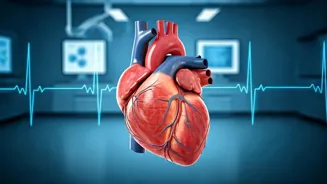What is Clubbing?
Nail clubbing, characterized by the softening and enlargement of the fingertips, with nails curving downwards, isn't just a cosmetic concern; it's a potential
indicator of significant health issues. The nails themselves may appear to have a greater curvature, resembling the back of a spoon. Often, the angle between the nail and the cuticle becomes noticeably wider, and the skin around the nail bed might appear shiny. This condition develops gradually over weeks or months. If you observe any of these nail changes, it's crucial to consult a healthcare professional promptly, as they can help identify the root cause and offer the appropriate medical attention to manage or mitigate the underlying health condition.
Liver Disease Link
Liver disease is a prominent cause of nail clubbing. The liver's role in the body extends to the filtering of blood and the processing of nutrients. When it's damaged or diseased, this can lead to various systemic effects, which might manifest in nail clubbing. The specific mechanisms linking liver disease and nail clubbing aren’t entirely understood. However, chronic liver diseases, such as cirrhosis or hepatitis, may be associated with abnormal blood flow and chemical imbalances that affect nail growth and structure. The connection highlights the need for medical evaluation if nail clubbing appears, particularly for individuals with a history of liver disease or related risk factors, such as excessive alcohol consumption or a family history of liver problems. Early detection through appropriate diagnostic tests can pave the way for timely interventions that mitigate the advancement of liver disease and associated complications.
Other Potential Causes
While liver disease is a significant concern, nail clubbing can arise from other medical conditions. Pulmonary issues, particularly those involving long-term oxygen deprivation, represent another common cause. These include chronic obstructive pulmonary disease (COPD), cystic fibrosis, and interstitial lung diseases. Cardiovascular problems, such as congenital heart defects or infective endocarditis, can also trigger nail clubbing. Additionally, certain infections, such as bacterial endocarditis, and inflammatory bowel diseases like Crohn's disease and ulcerative colitis, are associated with this symptom. In rare cases, nail clubbing may be caused by certain types of cancers, such as lung cancer or mesothelioma. It's important to undergo a comprehensive medical evaluation, which may involve a thorough physical examination, imaging studies, and blood tests, to determine the exact cause and appropriate course of treatment.
Seeking Medical Advice
If you identify signs of nail clubbing, the first course of action should be to consult a healthcare professional. Self-diagnosing or ignoring the symptom can delay diagnosis and lead to the advancement of any underlying condition. The healthcare provider will begin with a detailed medical history, asking about any previous illnesses, lifestyle habits, and potential exposures. A physical examination is essential, with the nail changes being carefully evaluated in addition to assessing other vital signs and examining the overall health. Depending on initial findings, further diagnostic tests may be ordered. These may include blood tests to check liver function, lung function tests, or imaging studies such as chest X-rays or CT scans. Prompt and accurate diagnosis is paramount for the timely management of the underlying condition, thus maximizing treatment efficacy and potentially improving long-term health outcomes.
Managing Nail Clubbing
Managing nail clubbing primarily involves addressing the underlying medical condition that's causing it. The treatment approach depends on the specific cause identified. If the cause is liver disease, treatment focuses on managing the condition and preventing its progression. This may involve medications, lifestyle adjustments (such as avoiding alcohol), and, in severe cases, a liver transplant. For pulmonary causes, treatments could include bronchodilators, oxygen therapy, or other therapies to improve lung function. In cases where nail clubbing results from cardiovascular conditions, treatment may involve medications, surgery, or lifestyle changes. While nail clubbing itself isn't directly treated, the resolution of the underlying cause can often lead to an improvement in the appearance of the nails over time.

